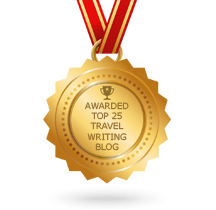In the modern world, there’s a widespread belief that shorter content is always better, and that readers’ attention spans are limited. While it’s true that brevity is important in many areas of travel content, it is not always the case. In fact, many readers are on the lookout for in-depth content that answers questions, educates and inspires them.
A recent study by Medium, a platform for technological content writing, revealed that the time spent reading one blog was up to seven minutes, or about 1,600 words. Other studies go further, demonstrating that the top-ranked content on Google has over 2,000 words. While these figures are enlightening, this isn’t just a question of longer versus shorter content – different topics and formats need different word counts. The takeaway is that you should write however much is needed to get your message across. That if you give readers good content, they’ll read it.
So how do you go about choosing the perfect word count for your travel content – and how do you structure it to make it as reader-friendly as possible? Scroll down to read some tips from our expert travel content writing team…

Focusing the Idea
The first step to deciding on a word count is to focus your idea and get a clear image of what you are trying to convey. Trying to cram too much into one blog post or online article is going to result in a very long piece or, even worse, result in you trying to squeeze a large topic into a smaller word count, thus losing the detail and value of it.
Let’s look at an example. We recently wrote an article for a regular client, Dive Butler International, with the title Diving in Raja Ampat, Indonesia. From the title alone, readers (not to mention the search engine bots) know what the article is about. The title’s specific and focused – about one particular activity in a focused geographical area.
But what if our client had opted for Diving in Indonesia? Or Visiting Raja Ampat? We would have been looking at much larger topics, and therefore needed to either have a very long word count or to write the piece in the style of an overview. In many cases that would be fine, and overviews are hugely valuable content too. But the point to take away is that a slight re-focus of an article subject can change not just the word count but the core message.
Breaking Up Content into Bite-Sized Chunks
You already know what this paragraph is about, right? Because you have already (and automatically) scanned the sub-headings. While your readers are happy to read longer content, one surefire way of losing their attention is to bombard them with a long page of uninterrupted prose. Instead, your content needs to be reader-friendly, so it engages and entices people to continue reading. Catchy, to-the-point sub-headings are a great way to do that.
The use of sub-headings is a good thing for everybody. It helps you as the content creator to keep your subject focused. It helps your readers to navigate the content more easily and make longer content look less intimidating. And it’s great for increasing keywords and improving your SEO too (there’s more on that here). Depending on the depth of the subject and the word count, you’ll probably want there to be around 150 to 400 words between sub-headings. Within that, you can break up your content further by using several paragraphs and keeping them short.
Let’s return to our Diving in Raja Ampat example. A quick scan of the article reveals an instant picture of what it’s about. It’s covers a personal diving experience, the nature of the region, the coral reef diversity, and how and why the experience was transformative. This immediate insight allows the reader to decide whether or not to read on.

Consider Making a List
Another tool in the content writer arsenal is lists. Take a cursory look around the internet and you’ll find list articles everywhere you turn – whether it’s ‘The Top 10 Cities in Europe’, ‘Seven Reasons Why You Should Eat More Kale’ or ‘Five Top Tips to Save You Money’. You’ll find more than a few of them on this blog! There is a reason these are so popular – lists make for juicy, easy-to-read content which still pack in all of the information you want to convey.
Even if you don’t want to number your entries, you can still use the format (an introduction followed by a selection of entries, with a sub-header and paragraph of copy for each) to great effect. You’ll just call it a roundup instead!
The Bottom Line
When it comes to content, the key is always high quality and audience-focused. There’s no point following all the steps above if what you are producing is not of interest to your readers. But once you have nailed that first, vital step, your next priority is to make the content appear as accessible as they can. Remember, word counts matter considerably less than well-structured and easy-to-navigate copy – whether you decide to break your content down into manageable chunks using sub-headers, or to structure your article from the start in the form of a list.
Looking for more great travel content writing advice, covering everything from deadlines to briefs? Check out this section of the World Words blog. And for more helpful content writing advice, simply follow us on Twitter.
– Written by Samantha Wilson and first published in October 2019 on the World Words website. Read the original.
